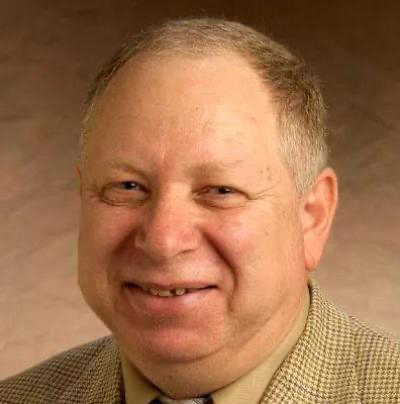GreyW
Advances and Activities in Fusion Energy
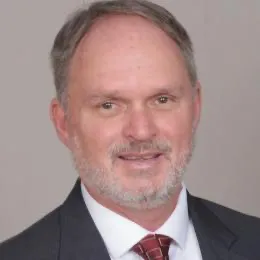
Mickey Wade, PhD
Director
Fusion Energy Division
Oak Ridge National Laboratory
Monday, April 11, 2022
Over 30 years, Wade has written or co-written more than 300 publications and been involved in numerous fusion energy community activities. He was named a fellow of the American Physical Society in 2010 for his outstanding contributions to burning plasma physics, impurity transport and the development of advanced tokamak scenarios.
Wade received a bachelor’s degree in nuclear science and engineering from Virginia Tech and masters and doctoral degrees in nuclear engineering from Georgia Tech.
Dr. Wade recently served as deputy director of Magnetic Fusion Energy for General Atomics and has extensive experience in fusion energy research, programmatic development and strategic planning. Under his leadership, the division is developing the understanding required for an attractive fusion energy source through domestic and international research collaborations, pursuing near-term applications to close the fusion fuel cycle and mitigate plasma disruptions, and developing solutions to materials and fusion nuclear science challenges presented by the harsh fusion environment. The organization also supports the Material Plasma Exposure eXperiment. As part of his role, he works closely with the U.S. ITER Project, which is based at ORNL.
In 15 years at General Atomics, Wade also served as the DIII-D national fusion program director and DIII-D experimental science director. From 1994-2005, he was a senior scientist at ORNL. He was also a leader in developing support and advocacy for ITER and served as co-chair of teh U.S. Magnetic Research Strategic Directions Community Workshops.
He will provide an engaging and accessible update on the many advances and activities underway now in fusion.
Forestry Reclamation Approach
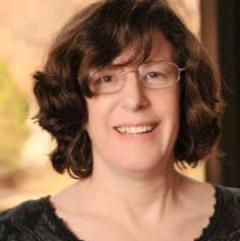
Dr. Jennifer Franklin
Professor
Department of Forestry, Wildlife and Fisheries
Herbert College of Agriculture
University of Tennessee, Knoxville
Monday, March 14, 2022
![Scenic view of a large plantation of young trees and a nearby, older forest.Please also see other images in this series:[url=file_closeup.php?id=15974214][img]file_thumbview_approve.php?size=2&id=15974214[/img][/url] [url=file_closeup.php?id=11130](/images/ARRI_iStock-154954021_1.jpg)
The 5G Evolution of Microwave Transmission
Dr. Aly Fathy
James W. McConnell Professor
Antennas and Microwaves
Department of Electrical Engineering and Computer Science
University of Tennessee
Overview of Advanced Antenna Concepts for 5G Applications (PDH*)
Monday, February 14, 2022
Zoom meeting
Implementation of advanced antenna concepts is essential for the success of the 5G evolution. The use of conventional beamforming networks — like Butler matrix, Blass matrix and the Rotman lenses network in addition to adaptive arrays — is very promising. The utilization of multi-element antennas in addition to deployment of advanced algorithms are the backbone of efficient spatial processing. Various antennas have been developed and can be utilized for beamforming, such as phased arrays and essential components for various MIMO use purposes that could operate in urban or suburban areas. Other antennas with high gain and powerful repeaters have been designed to extend coverage to rural areas as well. In this presentation, we will provide a brief overview of candidates for 5G antennas and discuss the impact of 5G and beyond technology in our society.
Dr. Aly Fathy is a James W. McConnell Professor at the University of Tennessee Knoxville and the Director of the Microwave/5G Labs at UTK. He is an IEEE Life Fellow and a very active researcher. He has been involved in developing UWB radars for SAR and MIMO applications and is focused on developing hardware for time and frequency domains UWB application and microwave systems measurements. Dr. Fathy’s research is recognized worldwide in the area of GPS, nm-waves, reconfigurable RF front ends, power combiners, and UWB radars. Additionally he has pioneered the development of reconfigurable antennas (sponsored by Intel and DAPRA). Moreover, he has developed many microwave enabling technologies (sponsored by ONR, DARPA, NASA and NRL). Professor Fathy’s research background is in SAR radars, 3D imaging, multi-band, reconfigurable, UWB, and reconfigurable multi-band antenna structures. He was awarded 14 patents, published 7 book chapters and over 350 IEEE publications. Dr. Fathy is internationally recognized. He received the distinguished educator award for 2021 by the IEEE Microwave Theory and Techniques Society and received numerous awards from Sarnoff Research Lab (formerly the RCA Research Lab) and the University of Tennessee.
* This webinar is offered as a professional development hour for Tennessee-licensed professional engineers.
Please note that PDH certificates can only be issued if you announce your intention to receive credit for attendance to the This email address is being protected from spambots. You need JavaScript enabled to view it. ahead of time, receive confirmation for it and are present with live video for the entire duration of the Zoom presentation. More information on Tennessee PDH is included at the end of the article About TSK.
Donate
PayDues
Please enter name(s) of member(s) in the Note field if different from name on payment account or credit card.
The Southern Appalachian Science and Engineering Fair
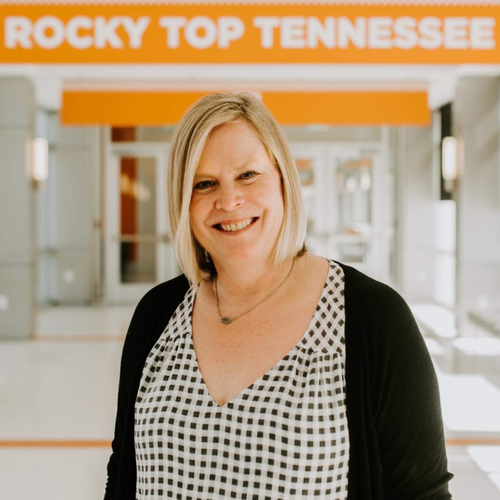
Susan Troop
Assistant Director for the Pre-College STEM Programs
University of Tennessee
The Southern Appalachian Science and Engineering Fair (SASEF)
Monday, January 10, 2022
The Southern Appalachian Science & Engineering Fair is the premier science and engineering competition for students in middle and high school for a 23-county service area of East Tennessee. It is the official, affiliated regional fair of the International Science and Engineering Fair and Broadcom MASTERS, the nation’s premier middle school STEM Competition. It is held annually on the University of Tennessee, Knoxville campus during the last week of March or first week of April.
SASEF has promoted teaching “the scientific method in science, engineering, and math” since 1952. In conjunction with the Knoxville News Sentinel and the University of Tennessee, The Technical Society of Knoxville sponsored the first “Southern Appalachian Regional Science Fair.”
On May 2, 1953, The Society gave the first awards dinner, which was attended by one hundred fifty students. It has continued to support the Fair, providing it with judges and, until 1966, underwriting the banquet. After that year TSK decided instead to donate two cash awards and trophies to the senior division winners in engineering or physics.
SASEF is always looking for scientists, engineers and teachers to serve as volunteer judges. This year’s fair will be held (tentatively) March 29-31, 2022. Register online to judge!
Susan Troop worked in undergraduate research at UTK prior to joining the Pre-College team in the Office of Undergraduate Admissions. She received her bachelor’s degree in elementary education at the University of Vermont and her master’s degree in higher education administration from UT. As a former classroom teacher she has a passion for connecting students with activities in Science, Technology, Engineering and Mathematics (STEM).
The Deadliest Pandemic in U.S. History
The Deadliest Pandemic in U.S. History
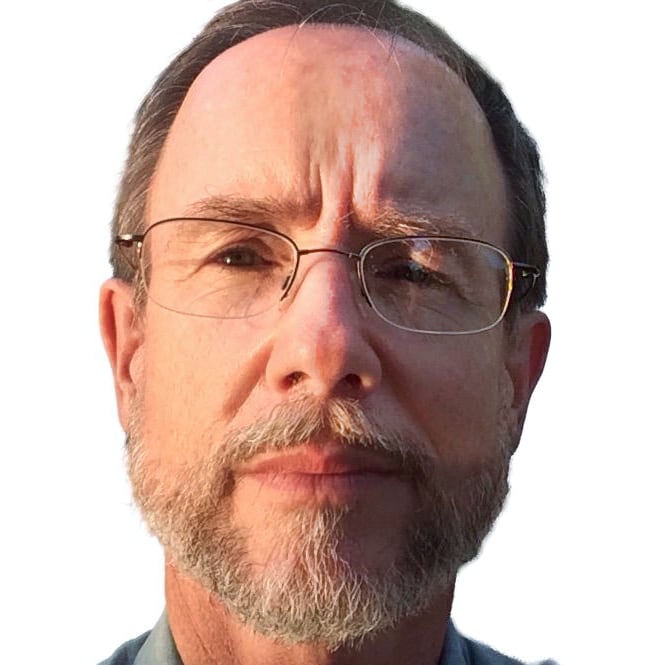
James M. Reynolds, MD
Monday, December 13, 2021
Tuesday, December 21, 2021
in cooperation with the Foundation for Global Sustainability
Board-certified family physician Jim Reynolds addressed,
- What are the best ways to protect yourself and your family from Covid?
- What situations are particularly high risk?
- Is it safe to fly or travel on a bus?
- How does one judge degree of safety for business, social, and athletic events?
His talk covered testing, transmission, “Long COVID,” new treatments, and how the different vaccinations stack up. Also who is at higher risk for hospitalization and death.
Dr. Reynolds has practiced outpatient medicine since 1986. A graduate of Emory University and the Medical College of Georgia, he completed a three-year family medicine residency in Anderson, South Carolina. His career included 16 years providing healthcare for the poor at the Knox County Health Department’s Indigent Care Program. More recently he cared for the city employees of Morristown. He retired in 2017 but continues to practice at the Free Medical Clinic of Oak Ridge one day a week.
Dr. Reynolds gave a presentation at TSK’s January 2017 meeting, entitled “Would the U.S. medal in a health care Olympics?” in which he compared and contrasted the structure and performance of medical insurance and services of the U.S. and other developed countries.
For more information contact the secretary, Wayne Loveday, This email address is being protected from spambots. You need JavaScript enabled to view it. or 865-679-9854.
Leading from the Project Management Position (PDH*)

Doyle Randall (Randy) Inklebarger, PE
President & CEO
MS Technology, IncMonday, November 8, 2021
Mr. Inklebarger was previously CH2M Hill's Government Facilities and Infrastructure (GF&I) Business Unit Vice President for Consulting and Design. He was also a member of the CH2M Hill Enterprise Technology Board serving as the Director for GF&I
His presentation will draw from his 39-year career in Engineering Consulting Services. Mr Randy Inklebarger will share his insights on leading from the project management position. His experience related to the topic includes global responsibility for CH2M Hill's capital delivery group; Program Management of an Alcoa aluminum plant expansion in Bohai, China; a major capital project for Boeing in Seattle; and numerous projects for the US Department of Energy site contractors.
Academic honors include Tau Beta Pi, Chi Epsilon, and Phi Kappa Phi membership, in 2012 the University of Tennessee Department of Civil and Environmental Engineering selected Mr. Inklebarger as their outstanding Alumnus and in 2017 he was named to the Department's Inaugural Hall of Fame Class.
Mr. Inklebarger is married to Gina Arico Inklebarger and they have two sons, Christopher and Anthony. Gina and Randy are active in the Saint Neumann Catholic Church. Mr. Inklebarger's recent community support includes advisory board member for the UT Department of Civil and Environmental Engineering, UT Chancellor's Associate, Chair for the 2015 and 2016 American Diabetes Association Tour de Cure, advisory board member for Knoxville Catholic High School and Committee Chair for the Boy Scouts of America.
* This meeting is offered as a professional development hour for Tennessee licensed engineers. Please note that PDH certificates cannot be issues for viewing the recording of an event. Remote attendees must register for a PDH ticket in advance and must be present via Zoom during the entire session. They also must request their PDH certificate from the TSK Secretary.
The presentation meets the State of Tennessee’s continuing education requirements for professional engineers. A PDH consists of at least 50 minutes of prepared presentation with discussion reserved for the time after the meeting.
The State Licensing Board does not pre-approve such hours. TSK does not guarantee approval, but strictly meets the Board-specified requirements and issues a certificate of attendance.
For more information contact the secretary, Wayne Loveday, This email address is being protected from spambots. You need JavaScript enabled to view it. or 865-679-9854.
Technical Society of Knoxville Channel on YouTube
Since 2020, some of the online meeting presentations of the Technical Society of Knoxville have been recorded.
You can watch them in the TSK Presentations Channel on YouTube.
We cannot ascertain that all presentations will become available on our channel because
- a speaker or their employer may not agree to a recording
- technical and other problems may prevent the recording or its quality may be insufficient for further processing
- volunteers may not be available for the tasks of recording, editing, documenting and/or publishing
No predetermined time frame for videos to become available for viewing has been established, as that depends on availability of volunteer hours and on hours needed to process the recording, which varies greatly.
We will announce the availability of additional presentations on this website.
You also my subscribe to the TSK Channel on its page in the YouTube website, which is shown when you tap its hyperlink given above.
Tennessee Licensed Professionals, please note:
TSK cannot issue certificates of attendance for viewing any of these recordings, even it they were announces as a professional development hour.
Certificates are issued only to those who attended an entire PDH presentation AND request a certificate in person at the end of the meeting,
or to those who registered for a TSK Zoom Event ‘PDH Ticket’ in advance and attended the entire live Video Webinar.
Far-UVC light: The future of pandemic (and epidemic) control?

Ultraviolet light to reduce the risk of airborne viral transmission in occupied locations
Dr. David Brenner
Monday, October 11, 2021
Zoom Event page*:
https://events.zoom.us/ev/AEJQ7JVR8M7RCSWlocdZ5wDZVgkNRkSk4yRiDc3JxkYeiza2Vmp48teADqtFXbWvro4fcFs
For the recording of the presentation, go to the
TSK Channel on YouTube
Most of us have heard of UVA and UVB, two ranges of ultraviolet light waves that should be filtered by sunscreen lotions or sprays to protect the human skin from sunburn. But fewer are familiar with UVC and UVV ranges at the far end of ultraviolet light frequencies emitted by the sun.
UVV has the shortest wavelengths. It interacts with oxygen molecules, creating ozone. Ozone is highly reactive. In elevated concentrations, it is deadly to any living organism. If inhaled, it can cause lung cancer! Fortunately, oxygen is abundant enough in the stratosphere for UVV energy to be depleted before it reaches the troposphere, let alone Earth’s surface.
UVC interacts and gets diffused by a variety of molecules in the atmosphere. UVC also does not reach lower elevations.
Besides the ocean, the spherical layering of the atmosphere is the most important natural life-support system of our planet. The highest concentration of ozone occurs at about 15 miles above the surface, which has become known as the ozone layer. Here, most UVB was interacting with ozone. Relatively little UVB reached us before the middle of last century when we started to release massive amounts of chlorine-containing chemicals such as chlorofluorocarbons (CFCs) into the air.
Chlorinated compounds lighter than air, escaping from air-conditioner refrigerants, aerosol sprays and similar products, disrupted the natural ozone balance in the stratosphere by depleting the ozone layer. UVB causes non-melanoma skin cancer and plays a major role in malignant melanoma development. It also damages plants and marine life, reducing revenues in agriculture and fisheries.
UVA is diffused and reflected to some extent by water vapor, ice crystals and other particles in the atmosphere, but its proportion in the sunlight that reaches the surface has not been altered substantially by human impacts.
Ultraviolet light has been used for decades to disinfect objects; rooms; and heating, ventilation and air conditioning (HVAC) systems. UVC is particularly suitable for that purpose because it disrupts the genetic code of microbes and viruses. Around 222 nm, it barely penetrates the outermost layers of human skin.
CAUTION — During the COVID-19 pandemic many vendors started offering ultraviolet lamp devices to consumers for use at home. Presently there is no certification standard for the safety and effectiveness of such devices. Even when used properly, invisible UV rays may unexpectedly get reflected by a mirror, metal or glass object and focus a beam at an eye. Users risk inadvertent, delayed and permanent harm, including severe burns or eye injury to themselves, children and pets. This has prompted the National Electrical Manufacturers Association (NEEMA), the American Lighting Association and the United Laboratories (UL) to issue a Warning: Consumers currently have no assurance against the risks of UVC over-exposure from consumer oriented UVC devices that do not provide proper containment of the UVC emissions. When used improperly, these types of devices may present an undue health risk. If you have already purchased such a device or believe you must buy one, watch this 7-minute video and watch Dr. Brenners presentation to learn about all the research that has already gone into discovery and verification of the best wavelengths, energy levels, and durations of exposure needed to obtain the desired outcomes and what further must be done to develop safe, reliable and affordable technologies to deliver the expected results at scale.
Dr. Brenner directs the Center for Radiological Research, which is now more than 100 years old. He started his career in theoretical physics — applying quantum mechanics to radiation therapy.
He focuses his work on special UVC lamps for interior spaces to destroy viruses without human injury. Some experts have noted that present prices of such lamps is about $500 each; a cost that would likely decrease if the lamps were mass produced.
His presentation is an opportunity to stimulate regional interest in developing advanced manufacturing technologies to rapidly lower production costs to about $15 per lamp. Market demand for 222 nm lighting devices could reach $24.2 billion by 2025, according to one estimate, with prospects of major R&D funding from government and private companies.
Dr. Brenner thinks, “the market is many-fold: Initially for hospitals, in operating rooms for irradiating above incisions during surgery to reduce surgical site infection rates. For public locations such as schools, hospitals, doctors offices, airports, airplanes and the food preparation industry, to reduce airborne transmission of viruses including influenza and measles, and bacteria such as TB.”
* Virtual event hosted by the Foundation for Global Sustainability (FGS).
FGS facilitates educational events to inform the public and foster better understanding of complex environmental, social and economic issues that impact the resilience of communities and the natural life support systems of planet Earth. Views and opinions expressed by event organizers and participants do not necessarily reflect the views of FGS. FGS neither endorses any product or service mentioned nor warrants for accuracy, completeness or usability of the information.
 Illustrations courtesy of Center for Radiological Research at Columbia University and its associated Radiological Research Accelerator Facility
Illustrations courtesy of Center for Radiological Research at Columbia University and its associated Radiological Research Accelerator Facility

